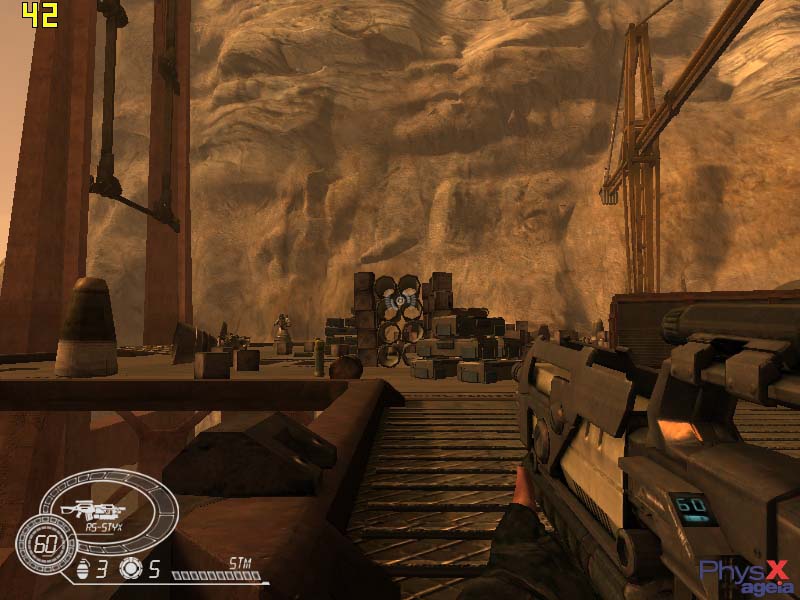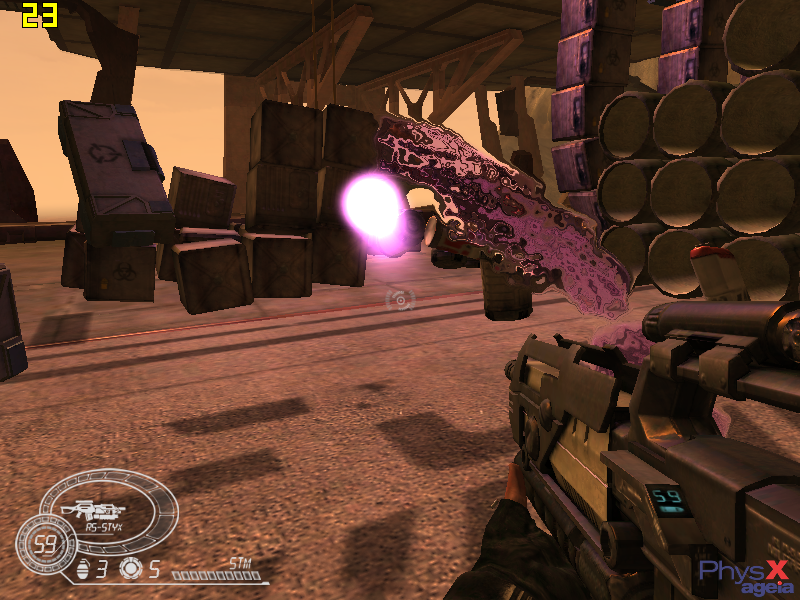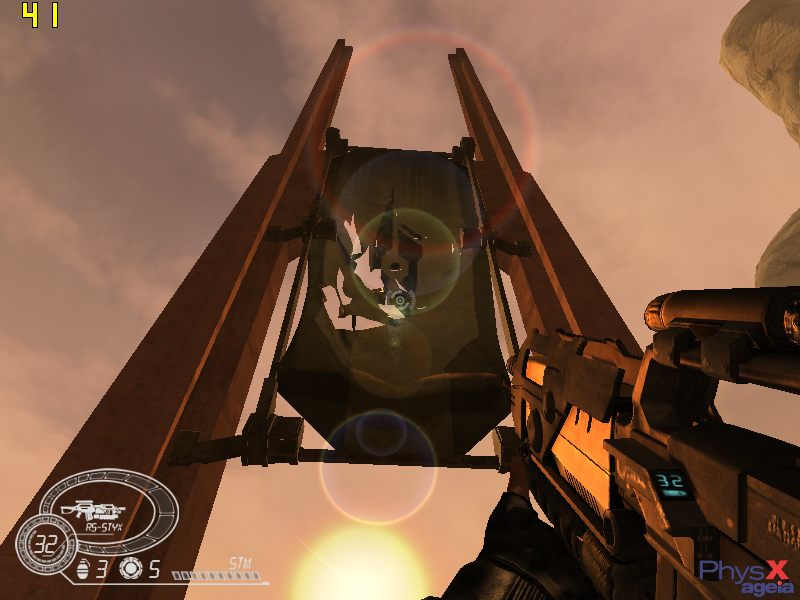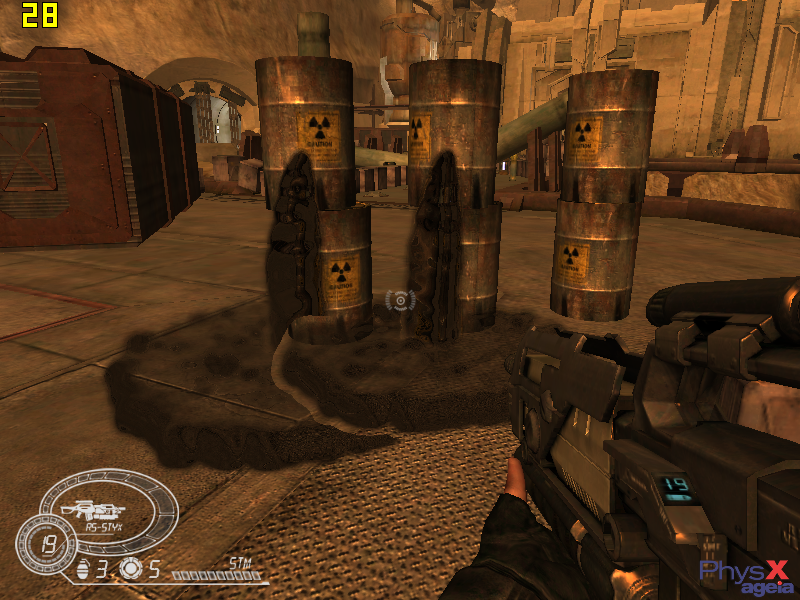|
|
|
|
中文版 | News | Archives | Reviews | Forum | $ Deals | Links | History | Contact | Privacy |
|
| ||||
|
ASUS AGEIA PHYSX PPU card
Review 8 Gripen 22 Jun 2006
Cellfactor Using FRAPS, the benchmark runs over 30 seconds in which the player shoots a bunch of pipes & boxes with his grenade launcher. I try to position myself in the same position each time. However, it's impossible to ensure all objects fly in the same direction each time(even if I shoot in the same spot), therefore just take these benchmarks as a rough gauge.  The demo is playable even without a PhysX card when ‘EnablePhysX’ is changed to false in the Reality Engine configuration file. Without PhysX card, the following differences were observed:
   Not a big deal in my opinion. Let's see how the performance slacks up.
Note: Sometimes when using the PhysX card, wind & gravity forces seems to be exaggerated as several movable objects in the game can topple or move on their own without player's intervention. More debris might also be generated with an PhysX card, but the difference wasn't really noticable in gameplay. The average framerates is almost the same with or without the PhysX card. Minimum FPS increased with the PhysX card, which is a good thing. This game is not a consistent benchmark, as there are too many different variables in every run. Despite my best efforts, I still get different results during every run. The only result that was constant is that minimum fps do increase when running with the PhysX card. Furthermore, this game is just a demo for now, so the developers may not finish optimising it yet. [1] [2] [3] [4] [5] [6] [7] [8] [9] [10] [11]
|
|
(C) Copyright 1998-2009 OCWorkbench.com
|